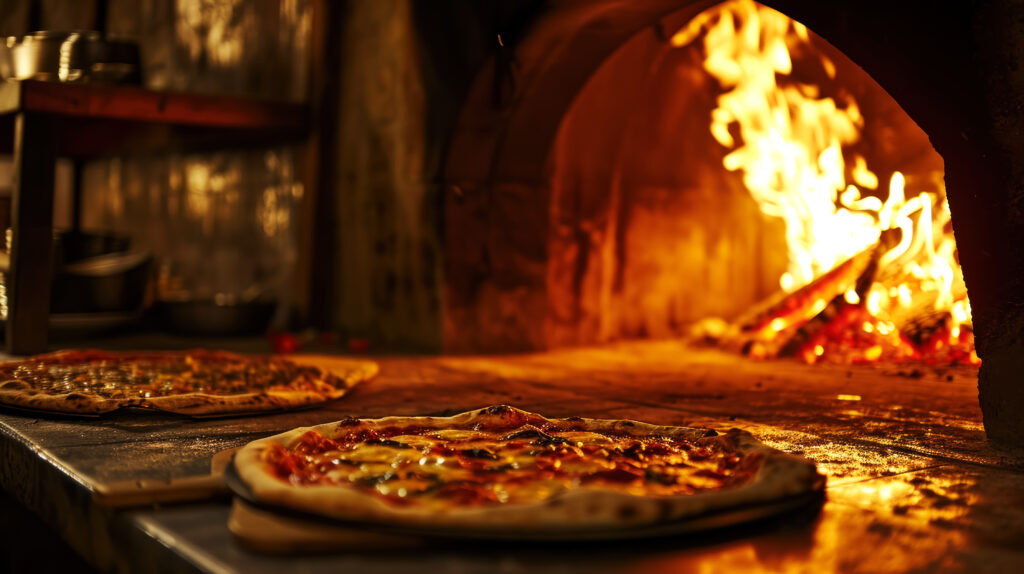Business Planning & Strategy, Financial Models
Pizzeria Business Model: Costs, Revenue Potential & Profitability
A pizzeria operates in a high-frequency, mid-ticket dining segment where profitability is driven by ingredient cost control, delivery throughput, and daypart balancing across dine-in, takeaway, and third-party platforms. With a structurally low food cost and high prep predictability, the model offers attractive margins when built around volume, labor efficiency, and repeat customer yield.
Asset Configuration
CapEx is moderate and centered on oven infrastructure, dough prep, refrigeration, and POS integration. A typical pizzeria spans 1,000 to 2,500 sq. ft., balancing counter space, kitchen flow, and limited seating (if dine-in is included).
| Asset Category | Cost Range (USD) | Notes |
|---|---|---|
| Oven and Kitchen Equipment | 50,000 to 90,000 | Deck or conveyor ovens, mixers, dough prep, refrigeration |
| Counter, Seating, and Dining Fixtures | 15,000 to 30,000 | Basic seating, service counters, pizza displays |
| POS, Delivery, Online Ordering Systems | 10,000 to 15,000 | CRM, payment, integration with apps and loyalty platforms |
| Branding, Signage, Packaging Setup | 10,000 to 20,000 | External signage, pizza boxes, branding collateral |
| Permits, Licensing, Initial Inventory | 10,000 to 20,000 | Health, food handling, dry and cold stock |
Total CapEx: 95,000 to 175,000 USD, with oven choice and dine-in presence as key cost variables.
Revenue Model
Revenue is transactional and multi-channel, with pizza forming the core, and sides, beverages, and combo upsells enhancing ticket size. Delivery and takeaway often comprise over 60 percent of sales, especially in urban locations.
Annual Revenue Potential for a 1,500 sq. ft. Pizzeria (70% Off-Premise)
| Revenue Stream | Volume Assumption | Annual Revenue (USD) |
|---|---|---|
| Pizza (slices and full pies) | 40,000 orders/year at 20 USD avg. | 800,000 |
| Appetizers, Salads, Sides | 600 orders/week at 8 USD avg. | 249,600 |
| Beverages | 1,000 orders/week at 3.50 USD avg. | 182,000 |
| Desserts and Upsells | 400 orders/week at 6 USD avg. | 124,800 |
| Delivery and Platform Fees Recovered | 1,000/week at 1.50 USD margin | 78,000 |
| Total | 1,434,400 |
High-throughput locations with alcohol licenses and dine-in capacity can exceed 2 million USD/year. Small-format takeaway-only shops may operate between 500,000 to 900,000 USD/year.
Operating Costs
Food cost is structurally low, typically 22 to 30 percent depending on topping generosity and cheese usage. Labor is semi-fixed and highly sensitive to order batching, especially during peak periods. Rent and platform commissions are fixed cost levers.
| Cost Category | Annual Cost Range (USD) |
|---|---|
| Cost of Goods Sold | 320,000 to 400,000 |
| Staff Wages and Payroll | 300,000 to 360,000 |
| Rent, Utilities, Insurance | 120,000 to 150,000 |
| Delivery Fees and Platform Charges | 70,000 to 90,000 |
| Marketing, Loyalty, Promotions | 30,000 to 45,000 |
| Equipment Maintenance and Supplies | 20,000 to 30,000 |
| POS, Tech, Admin | 15,000 to 20,000 |
| Total Operating Costs | 875,000 to 1,095,000 |
EBITDA = 1,434,400 – 875,000 to 1,095,000 = 339,400 to 559,400 USD
EBITDA Margin = 23.7% to 39.0%
Well-run pizzerias that batch orders efficiently, maintain tight topping control, and own customer data regularly exceed 30 percent EBITDA. Poor labor utilization or high delivery platform dependence compress margins toward the low 20s.
Profitability Strategies
Profitability in a pizzeria hinges on portion control, kitchen throughput, and channel mix discipline.
First, engineer your menu to standardize prep time and minimize topping cost variance. Set strict weight targets on cheese, meats, and premium toppings. Promote high-margin pies (e.g., vegetarian, white pizzas) with bundled drinks to lift average ticket and lower COGS mix.
Second, compress kitchen cycle time. Use station-based prep, pre-batching dough, and dual-line assembly during peak hours to hit sub-10 minute order fulfillment. Target oven utilization above 85 percent during meal rushes.
Third, control labor-to-sales ratios, especially with variable front-of-house staff. Cross-train staff to cover order prep, boxing, and delivery packaging during off-peak hours to reduce underutilization.
Fourth, drive repeat orders through loyalty and first-party ordering. Promote ordering through owned channels with discounts or add-ons to reduce reliance on third-party apps that take 20 to 30 percent commission.
Finally, introduce family bundles, lunch specials, and late-night hours to monetize unused capacity. Pizza is format-flexible; daypart monetization is a structural advantage.
So what?
A pizzeria is not a commodity restaurant: it is an ingredient-yield, labor-optimized, multi-channel fulfillment model. Profitability depends on prep standardization, oven velocity, and delivery channel mix—not just taste or variety. Operators who manage portion yield, optimize labor per shift, and migrate orders to first-party channels can achieve 24 to 39 percent EBITDA margins on 1.4 million USD in revenue, with CapEx under 175,000 USD. In pizza, the margin is baked into the structure.

Are you considering opening your Pizzeria business? Download the comprehensive Pizzeria Business Financial Model Template from SHEETS.MARKET to simplify your financial planning. This tool will help you forecast costs, revenue, and potential profits, making securing funding and planning for success for your Pizzeria business easier.



